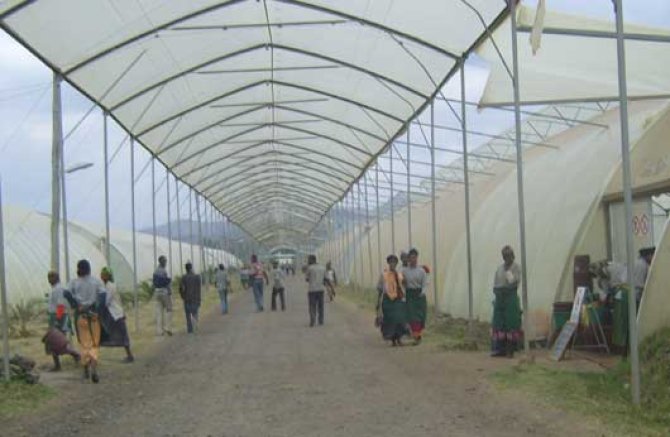Nouvelles
Waste of fertilizer in Ethiopian rose cultivation
Fertilizer and pesticides dominate the environmental performance of roses grown in Ethiopia. This also applies for Dutch horticulturists who started rose companies in Ethiopia in the past years, as pointed out by a life cycle assessment of Abiy Sahle.
Rose cultivation was booming business in Ethiopia in the past years. Presently the rose sector counts more than 100 farms. The smallest ones have five hectares of plastic greenhouses to grow their roses, the biggest companies use up to 200 hectares. Approximately half of the companies have foreign owners, of which most are Dutch. As part of his master thesis Abiy Sahle, who is working at the Ethiopian Horticulture Producer Exporters Association, received data from 21 farms in four different regions of the country.

‘Sustainable production is becoming an issue, due to the international competition in the rose sector’, says Sahle. ‘Ethiopian producers need to perform better.’ His life cycle assessment points out that fertilizers are largely responsible for the cradle to farm exit-gate environmental impact of roses. Farms use a lot of fertilizer that are largely washed off in the soil. Besides, the production of fertilizer costs a lot of fossil fuels. The study also finds that pesticides are major pollutants, because they introduce toxic wastes in the environment. Local transport of flowers to the airport is far less polluting than the inputs for production, reports Sahle in the journal Science of the Total Environment together with supervisor José Potting. Transport of the roses to Europe was not included in the study.
‘There is a lack of information about how to use fertilizer and pesticides in a sustainable way at the farm level’, says Sahle, who is an on-farm training instructor at the horticulture association. The workforce has no adequate knowledge of a proper yield with minimum inputs, both in local and Dutch owned companies. A social constraint in improving the knowledge level is that more experienced workers often change jobs. His advice is that the farms should make training plots with different levels of fertilizer so that the workers can experience optimal use of fertilizer. Moreover, the farms should adapt Integrative Pest Management to minimise the use of chemicals.
‘Another option is that the Ethiopian companies, just like the Dutch ones in the Netherlands, introduce rose cultivation on substrate’, says Sahle. Growing roses without soil allows to recycle the fertilizer. The environmental improvement options for rose cultivation in Ethiopia should be further studied, together with the economical aspects. He now hopes to get funding for a PhD to study the sustainability performance of the rose farms in more detail to get tailor-made advice.
Source: Resource